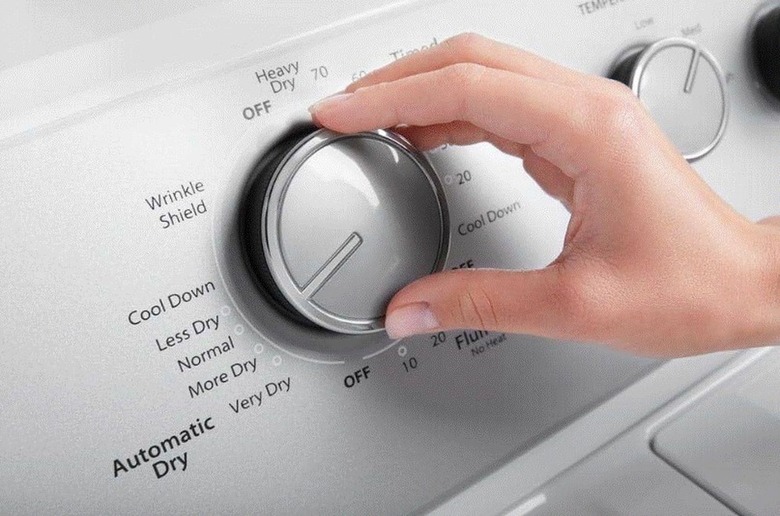Whirlpool Dryer Cycle Description
We may receive a commission on purchases made from links.
It's impossible to correctly use a dryer when you don't understand its cycles. Which Whirlpool dryer cycle you select should be based on the size of your laundry load, your garments' fabric composition, and personal preference. Always check a garment's care tag before drying, but higher temperatures are generally best for heavy items, like towels and jeans. In contrast, cooler temperatures are preferable for lighter materials, like lace and cotton, and no heat should be used on heat-sensitive fabrics, like silk.
Here's a description of all the cycles your Whirlpool dryer might have.
Automatic Drying Cycles
Automatic Drying Cycles
Most Whirlpool dryers have a series of automatic cycles, which may be called "AccuDry Cycle," "Automatic Dry Cycle," or "Auto Dry Cycle." These automatic cycles sense moisture in your clothing and shut off when the load reaches the proper dryness level. Automatic cycles do the best job of drying your clothes in the shortest time, but the cycle length varies based on the load size and materials.
Most of these cycle names are self-explanatory, though terms vary based on the model. "More Dry" and "Very Dry" settings leave clothes the driest. "Normal" gives you the best energy savings while still thoroughly drying your clothes, which is why it's sometimes called "Energy Preferred." The "Less Dry" option doesn't fully dry clothes but reduces the moisture so they can be hung up to dry, which is why it is alternatively called the "Delicates" cycle.
Tip
When you're unsure of the ideal cycle, opt for the lower setting to err on the side of caution. If you notice that your clothes come out too dry, run them on a lower cycle the next time. Alternatively, if they are less dry than you like them to be, try a higher setting in the future.
Timed Dry Cycles
Timed Dry Cycles
If you prefer to set the cycle length yourself, use a timed drying cycle instead. Timed cycles allow you to control how long the dryer operates rather than going by the moisture sensor. When using timed dry, choose a temperature appropriate for the materials in your load. As an example, if you are drying a comforter, you'll typically want to use a high temperature, but if the comforter has lace detailing, choose a low heat setting instead.
On the high end of the timer setting, many dryers have a "Heavy Duty" or "Heavy Dry" option, designed for larger loads like those containing bedspreads, sheets, coats, and pillows. Use this cycle to ensure larger, bulkier loads are dried thoroughly.
Near the low end of the timer is the "Damp Dry" option for items that don't require a complete dry cycle. This cycle is useful when you want to hang clothes to dry.
Cool Drying Options
Cool Drying Options
Some dryers also have a "Tumble Dry," "No Heat," or "Fluff" timed setting. Tumble dry is a gentler setting that can be done with low or no heat, while no heat and fluff settings always use no heat. Whatever the name, the purpose of these settings is the same — gently drying heat-sensitive fabrics.
Wrinkle Removal Options
Wrinkle Removal Options
To remove wrinkles from clothes, run the clothing on medium heat using "Permanent Press" or "Wrinkle Control." When you are unable to remove the clothing immediately after the dryer runs, use the "Wrinkle Shield" option that periodically tumbles and fluffs the load to prevent wrinkles. "Wrinkle Shield Plus" is the same as basic "Wrinkle Shield" only with the addition of steam to prevent wrinkles from forming for up to 150 minutes after the end of the cycle.
